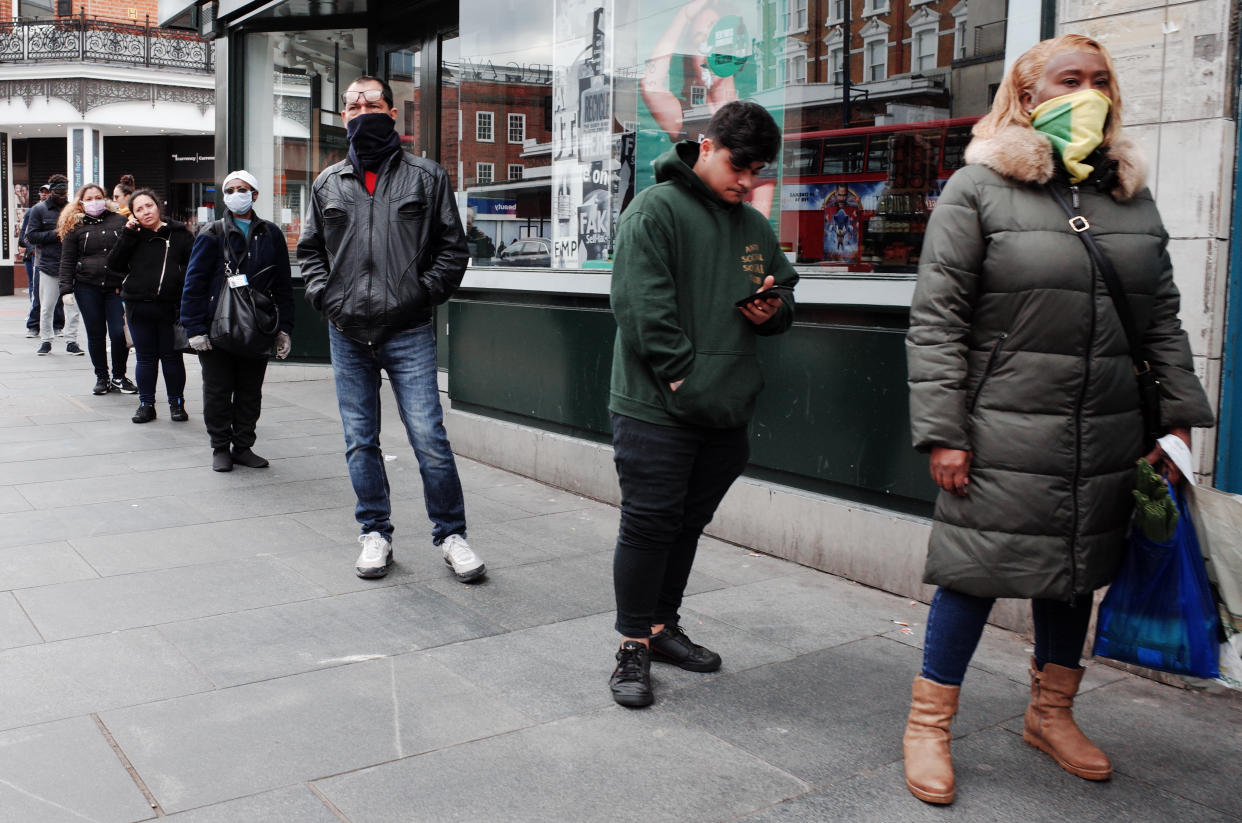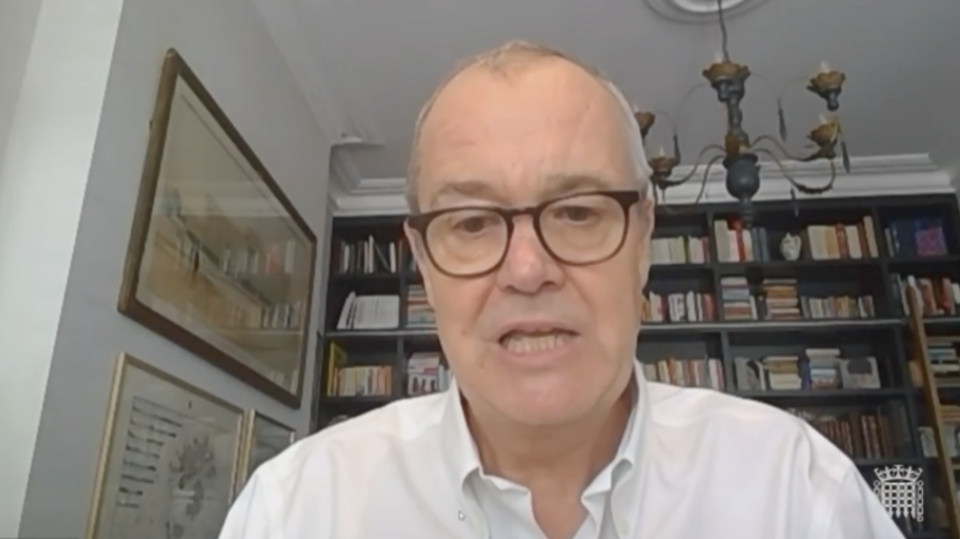Coronavirus: Risk of spread 'up to 30 times higher' at one metre away from infected person rather than two

The risk of coronavirus spread is up to 30 times higher when someone is a metre away from an infected person than two metres away, the government’s chief scientific adviser has said.
Sir Patrick Vallance, giving evidence to the Commons health and social care committee, emphasised the importance of abiding by the two-metre social distancing guidelines set out by supermarkets and other essential shops during the lockdown.
He also said the risk of transmission outdoors is “really low”.
Sir Patrick told MPs on Tuesday: “The two-metre distancing is based on a probability. The evidence is essentially a minute at two-metre contact is about the same risk as six seconds at one metre.
Latest coronavirus news, updates and advice
Live: Follow all the latest updates from the UK and around the world
Fact-checker: The number of COVID-19 cases in your local area
6 charts and maps that explain how COVID-19 is spreading
“The risk at one metre is about 10 to 30 times higher than the risk at two metres, so distancing is an important part of this.”
Sir Patrick went on to say face coverings “may have a role” in scenarios where two-metre distancing is not possible – though he made clear he was sceptical about the evidence on offer.

“Where masks therefore may have a role is in situations where distancing is not possible [or] where there may be undue crowding – but ideally there shouldn’t be crowding.
“There may be times where wearing masks can be beneficial to stop the spread.
“It’s important that those coverings cover the nose and mouth, and it’s important people don’t handle their face a lot because there’s a much much higher risk in terms of transmission from hand to face.”
However, he then said of research into face coverings: “The evidence gets even weaker in terms of any positive effect.
“There are lots of theoretical reasons that we have laid out as to why masks may make a difference.
“In the trials that have been done, it is very difficult to see any significant effect.”
Read more: Coronavirus vaccine would not be made compulsory, Matt Hancock says
Sir Patrick said advice to wear face coverings is ultimately a “decision for politicians”.
On Thursday, Boris Johnson all but confirmed the government will advise wearing face coverings as part of measures for easing the lockdown.
The prime minister said they are “useful both for epidemiological reasons but also for giving people confidence they can go back to work”.
The devolved Scottish government has already issued a recommendation for people to wear coverings while food shopping and using public transport.
In its announcement on Tuesday last week, it admitted evidence about face coverings’ effectiveness in preventing coronavirus transmission remains “limited” but that “there may be some benefit” in wearing them.
Scotland defined a face covering as cloth or textiles covering the mouth and nose through which a person can breathe, for example a scarf.


